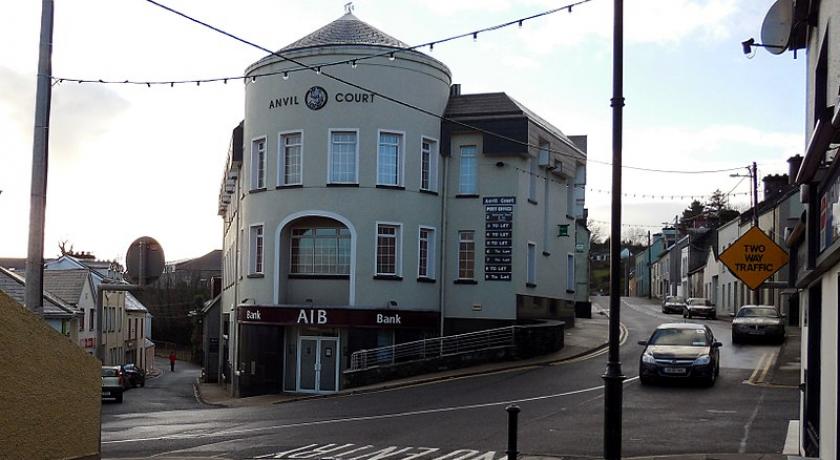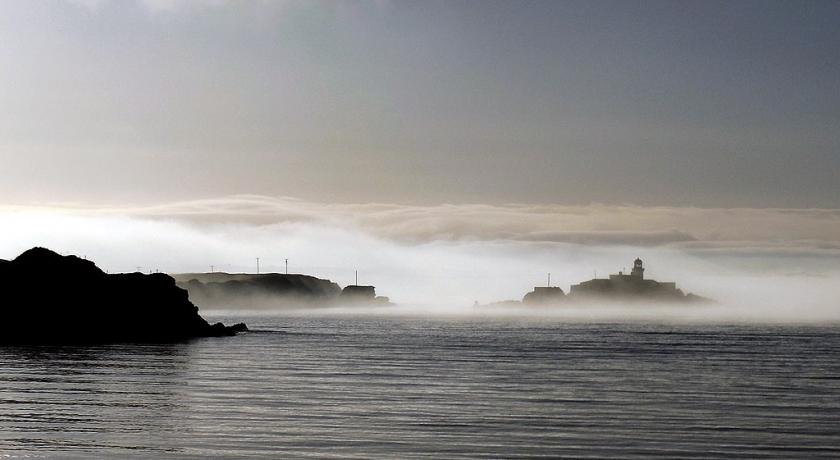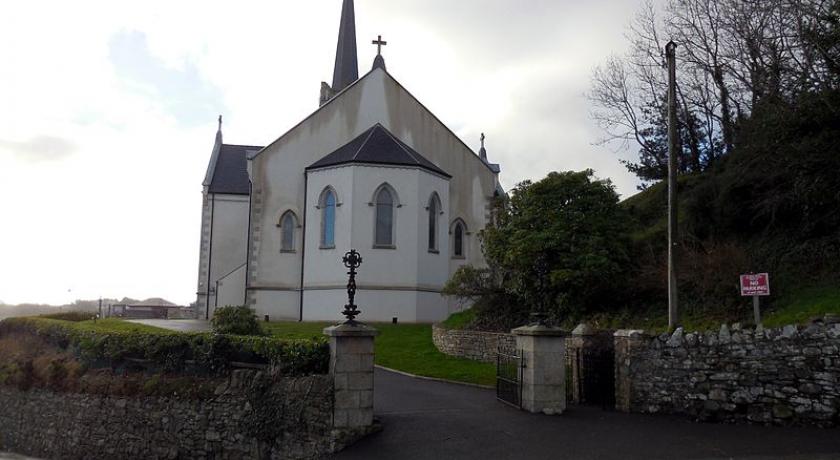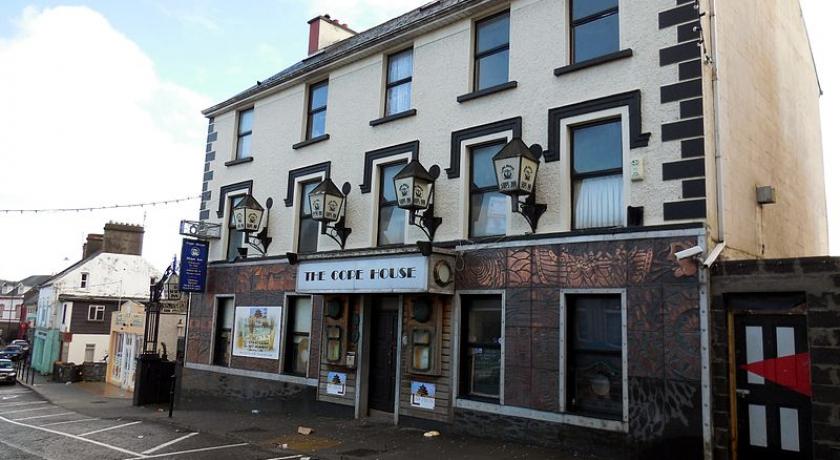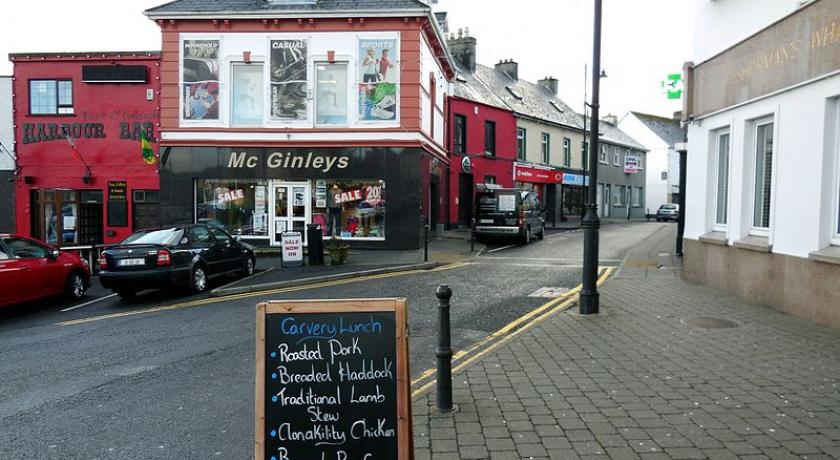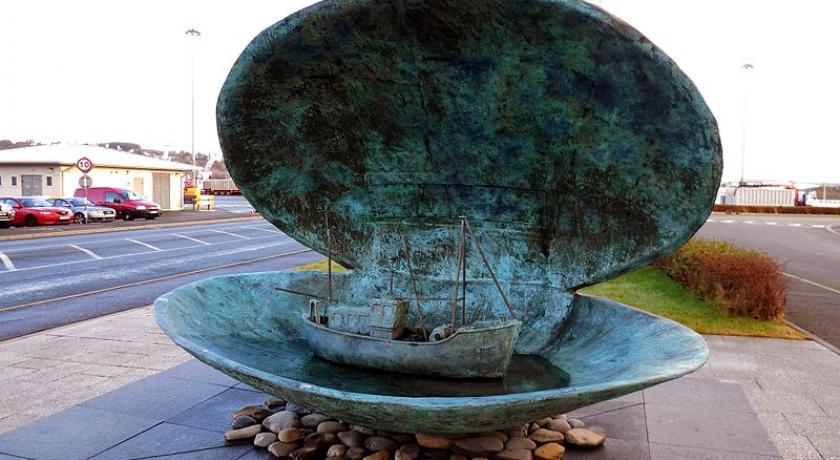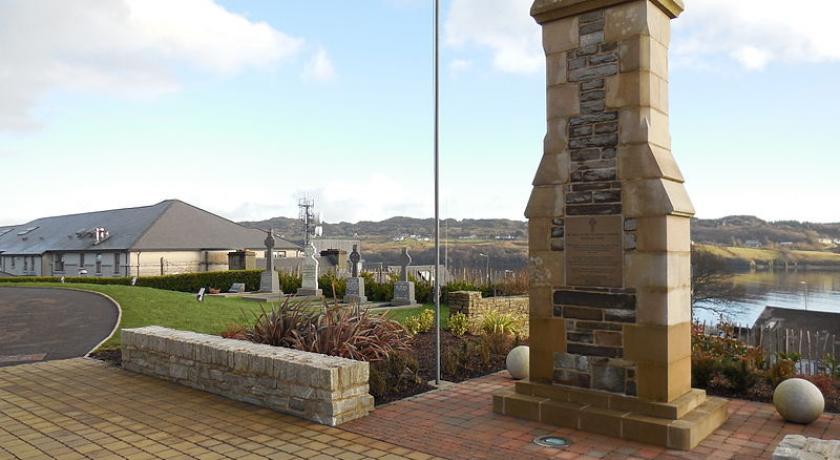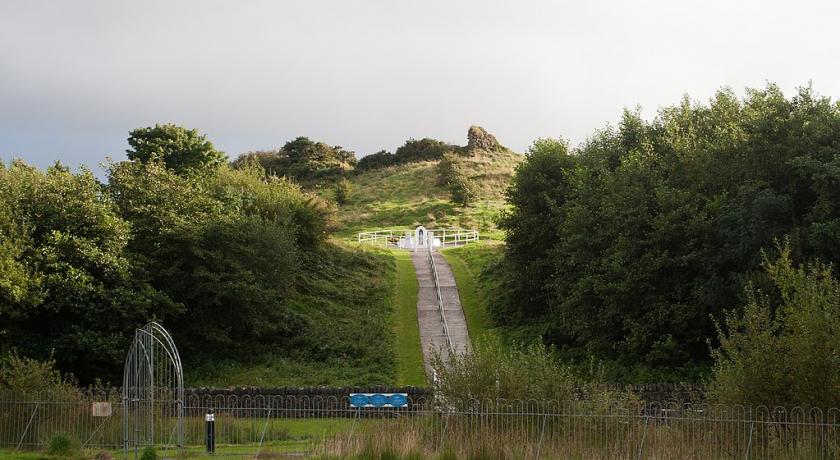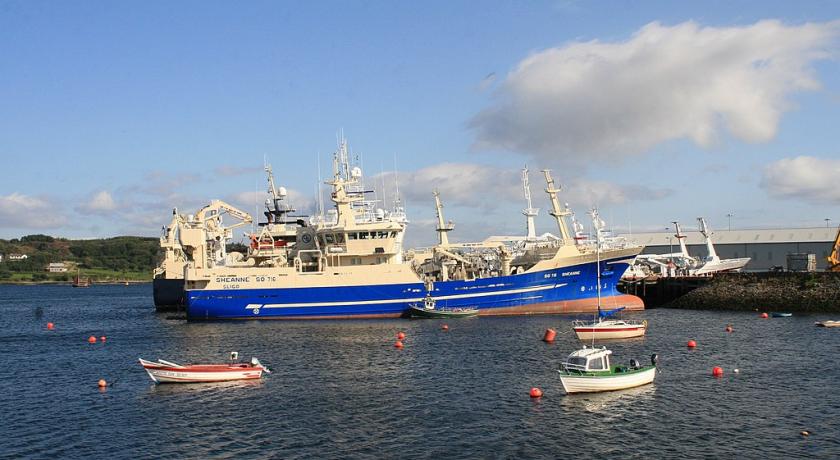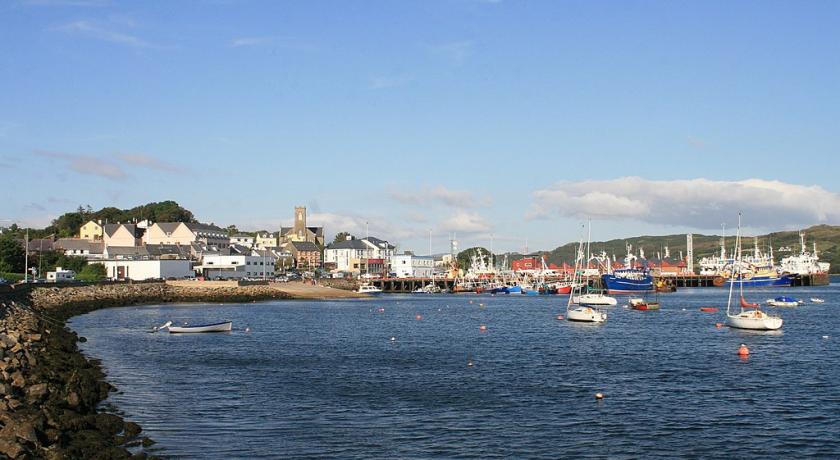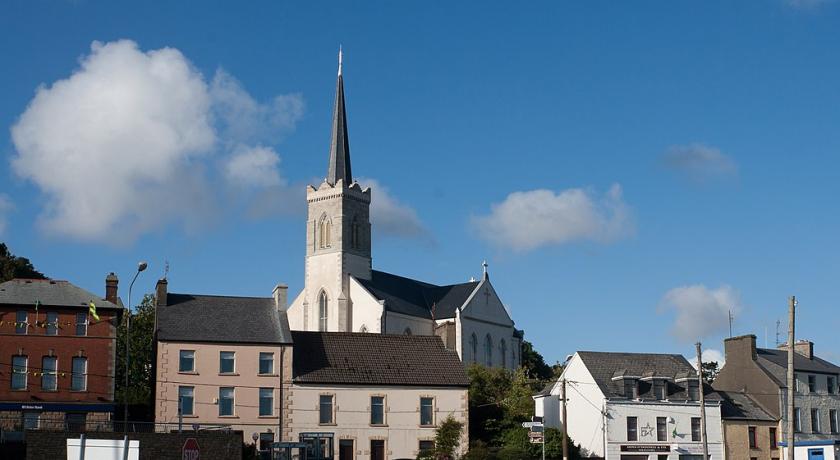Description
Killybegs (Irish: Na Cealla Beaga) is a town in County Donegal, Ireland. It is the second largest fishing port in the county and on the island of Ireland. It is located on the south coast of the county, north of Donegal Bay, near Donegal Town. The town is situated at the head of a scenic harbour and at the base of a vast mountainous tract extending northward. In the summer, there is a street festival celebrating the fish catches and incorporating the traditional "Blessing of the Boats". It has a population of 1,297
History
In 1588, Killybegs was the last port of call for the Spanish vessel La Girona, which had dropped anchor in the harbour when the Spanish Armada fetched up on the Irish coast during Spain's war with England. With the assistance of a Killybegs chieftain, MacSweeney Bannagh, the Girona's personnel were fed, her rudder repaired, and she set sail for Scotland, but was wrecked off the Antrim coast with the loss of nearly 1,300 lives.
Fishing industry
Killybegs is a natural deepwater harbour with a depth of 12 meters at low water spring tide at the new €50 million pier completed in 2004. The harbour is home to all the largest Irish midwater pelagic trawlers, and a modest whitefish fleet, but it handles many other types of shipping as well. These include passenger cruise liners and mixed specialist cargoes. In recent years Killybegs has become the favoured port for the importation of wind turbines, and is a service port for the offshore gas/oil drilling rigs.
The town is the centre of the Irish pelagic fishing and processing industries, as it specialises in the processing and freezing of species such as mackerel, herring, scad, and blue whiting. The finished processed fish is exported to markets in Africa, the Middle East and Europe by freezer ships. However, due to blanket enforcement of EU fishing regulations on Irish vessels by the Irish Department of the Marine, starting in 2005, and mackerel shoals remaining longer in Norwegian waters, there has been a downturn in the fishing industry in the town. This has led to redundancies in the fish processing industry, in which the fish factory workers have been the hardest hit.
Education
The first National school, known as 'Killybegs National School', and later as the 'Commons National School', opened in 1834 on a site originally provided by the Plantation Commissioners in the reign of King James I There are three National schools and one second level school in Killybegs as well as a third level institution Tourism College Killybegs, the only dedicated tourism institute in Ireland, offering courses in hospitality and culinary skills. The college has been academically integrated with Letterkenny Institute of Technology since 2001. The Donegal Town to Killybegs branch of the County Donegal Railway terminated at the harbour and some of the remains can still be seen to this day. The railway closed on the last day of 1959. 'St Catherine's Vocational School' is a non-denominational, co-educational second level school. There are twenty six teaching staff, five special needs assistants and three support staff. The student population is 348 and the male to female student ratio is approximately 50:50. The present two-storey building opened in 1987 provides facilities for students, teachers and members of the community. St Catherine's has a range of extra curricular activities, the school has had success in English, Irish and science debates. The arts are well provided for with an art and music department,the music department has staged a number of musical productions,students are taught a variety of instruments. Work from the art dept can be viewed on killybegstech.com. Sport is also an important aspect of school life students participate on teams representing the school in soccer, gaelic football, athletics, basketball and rugby.
Beach
Fintra beach (registered blue flag) is located on the outskirts of Killybegs town. It consists entirely of fine golden sand, and receives large numbers of day-trippers during the peak of the tourist season. It is lifeguarded throughout the bathing season, and is regarded as one of the safest beaches in Ireland.
Donegal Carpets
Killybegs is famous for its tapestries and carpets, some of which were produced on the biggest carpet loom in the world at the "Donegal Carpet Factory". The carpets, known as Donegals, are hand-knotted in the Turkish style. The carpets have adorned many important buildings in Ireland such as Dublin Castle, the Royal Hospital Kilmainham, Áras an Uachtaráin, Buckingham Palace and internationally the Vatican, The White House, 10 Downing Street and most state buildings around the world. The factory in Killybegs closed in 2003 and has been open since 2006 as the Maritime & Heritage Centre. The Centre provides information on the carpet making and the fishing industry. Tours are conducted daily and visitors can watch smaller carpets being made and try making a knot. There is also a ship simulator which is the most modern in Ireland. The simulator offers three levels of technique providing great fun for children and the not so young testing their navigation skills. The centre is open all year round.
Sport
The local soccer club, St. Catherine's FC, was founded in 1896 and they play their home games at Emerald Park.
The local GAA club is Na Cealla Beaga. They play their home games The Eamon Byrne Memorial Park.
Killybegs Rowing Club can often been seen training in the harbour during the summer months and hold an annual regatta on the last weekend of July. The club row the Donegal Skiff, the traditional skiff of county.
Killybegs in literature
Killybegs Authors: John C. Ward: An Teagasg Criostaidhe fa Choinne Dioghoise Ratha Bhota 1891; Turas na croiche agus an Choróin Mhuire maille le dántaibh diadha 1892; Na hEipistil agus na soisgéil do na Domhnaigh agus na laetha saoire arna dtarraingt go Gaeilge 1904; An Cruinneolaí 1906; Leabhar filíochta fa choinne na scoil 1909 (with Padraig O'Beirne).
Thomas Colin MacGinley ('Kinnfaela'): The Cliff Scenery of South-Western Donegal 1867 (Reprinted by the Four Masters Press 2000); General Biology 1874.
Very Reverend James Stephens, P.P.: Illustrated Handbook of The Scenery and Antiquities of South-Western Donegal 1872.
Charles Conaghan: History and Antiquities of Killybegs 1975.
Dr Donald Martin: Killybegs Then and Now 1998; Killybegs-Down Memory Lane 2011.
Pat Conaghan: Bygones 1989; The Great Famine in South-West Donegal 1845–1850 1997; The Zulu Fishermen 2003; Steamed Fish (The Phoenix No 2, Winter 1991/2); Stranorlar, Not San Francisco (The Phoenix No 3, Spring 1992).
Bella McGee (poet) James Conwell (poet) Padraig O'Beirne (poet) e.g.: Mo Phiopa Gairid Donn (n.d).
In 2011, French novelist Sorj Chalandon published "Retour à Killybegs" (back to Killybegs") whose main character, Tyrone Meehan an 80-year-old former IRA officer and British agent during 20 years, was born then murdered in April 2007 at his family's home in Killybegs.
Source: https://en.wikipedia.org/wiki/Killybegs
Address
Killybegs
Irlanda
Lat: 54.634761810 - Lng: -8.454708099


